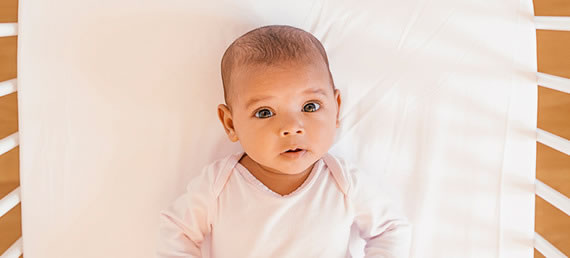Release Date: September 19, 2024
Release Number 24-365
WASHINGTON, D.C. – A new report from the U.S. Consumer Product Safety Commission (CPSC), shows that injuries and deaths associated with nursery products persist among children younger than age five. The report, Injuries and Deaths Associated with Nursery Products Among Children Younger than Age Five, shows that on average, more than 170 infant deaths were associated with nursery products annually between 2019-2021. Unsafe sleeping environments – such as those that include soft bedding added to the cribs, playpens/play yards or bassinets/cradles – accounted for 126 deaths during that three-year period.
CPSC’s latest data show that between 2019 and 2021:
- There were 523 deaths reported among children younger than age five – an annual average of 174 deaths – associated with, but not necessarily caused by, nursery products.
- Cribs/mattresses, bassinets/cradles, playpens/play yards, inclined infant sleep products, and infant carriers were associated with most (76 percent) of the fatalities reported from 2019 through 2021.
The report also highlighted racial disparities in nursery product-related deaths, including:
- When focused solely on nursery product-related deaths with known race, on average, from 2019 through 2021, African American children made up 33 percent of deaths, more than double their 15 percent share in the population.
During September’s Baby Safety Month, CPSC is urging parents and caregivers to put their babies to sleep only in products that are safe for sleep–such as bassinets, cribs, play yards and bedside sleepers that meet federal standards with no soft bedding added, just a fitted sheet. Babies who fall asleep in other locations should be moved to a crib, bassinet or play yard.
“Babies aren’t little adults. They don’t need pillows and blankets to feel comfortable and safe when they sleep,” said CPSC Chair Alex Hoehn-Saric. “The safest way for your baby to sleep is without blankets, pillows, or other items surrounding them. A firm flat surface in a crib, bassinet, play yard or bedside sleeper with just a fitted sheet is all they need.”
CPSC is urging parents and caregivers to follow these safety steps to lay their babies down in a safe sleep place:
- Back to Sleep: Always place the baby to sleep on their back to reduce the risk of sudden unexpected infant death syndrome (SUID/SIDS) and suffocation.
- Bare is Best: Always keep the baby’s sleep space bare (fitted sheet only) to prevent suffocation. Do not use pillows, padded crib bumpers, quilts or comforters.
- Transfer the baby to a firm, flat crib, bassinet, play yard or bedside sleeper if they fall asleep in a swing, bouncer, lounger or similar product.
- Inclined products–with an angle greater than 10 degrees– such as rockers, gliders, soothers and swings should never be used for infant sleep, and infants should not be left in these products unsupervised, unrestrained, or with soft bedding material, due to the risk of suffocation.
CPSC is committed to protecting its most vulnerable population with the implementation of a recent Infant Sleep Products rule.
RECALLS: Always check to see if any purchased baby nursery products have been recalled, which includes any secondhand products. Remember, babies rely on adults to keep them safe. Sign up today at CPSC.gov.
For more tips on baby safety, recalled baby products and to view CPSC’s baby safety public service announcement, visit CPSC’s Safe Sleep and Crib Safety Education Center here.

